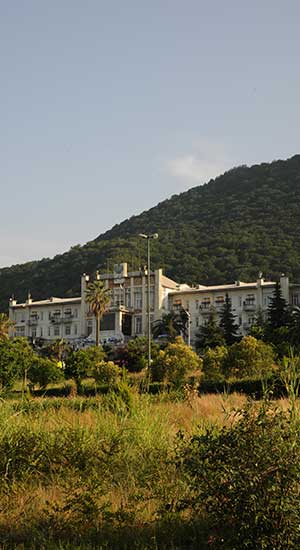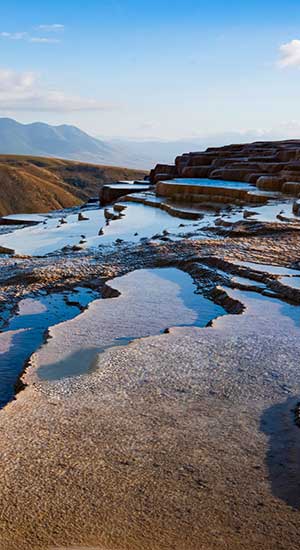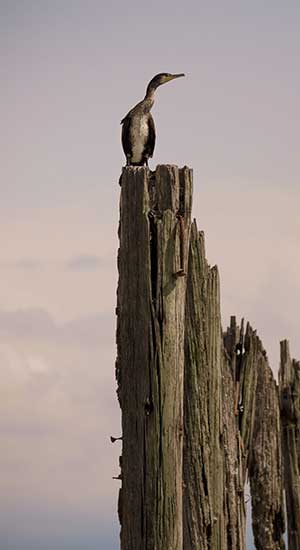
A Brief History
Tabarestan (Mazandaran) was the epicenter of early Iranian civilization at the turn of the first millennium BC. It was the last portion of Iran to be converted to Islam, having been conquered by the Arab general Yezid ibn Mohallab around AD 720. Mongol invaders crossed its fragile eastern and southeastern borders in the 13th and 14th centuries. The territory was assaulted by Cossacks in 1668, but they were defeated.
It was given to the Russian Empire by treaty in 1723, although the Russian occupation was never secure. Under the Qajar dynasty, the land was returned to Iran. A lowland along the Caspian and an upland along the northern slopes of the Elburz Mountains make up the region's northern part. The coastal plain is dominated by marshy backlands, while the mountains are surrounded by huge gravel fans. The climate is subtropical and humid all year, with scorching summers.
Climate and weather
The geographical latitude, Alborz heights, elevation from sea level, and distance from the sea, as well as the southern barren lands of Turkmenistan, local and regional air currents, and a diverse vegetation cover, all have an impact on Mazandaran province. As a result, the province's climate has been split into three types: The weather in the Caspian region is moderate, with hot, humid summers and warm, humid winters. Cold mountainous weather with long freezing winters and short cool summers, and moderate mountainous weather with long, cold, and freezing winters and pleasant and brief summers. Snowfall is common in the latter region throughout most of the seasons, and it lasts until mid-summer.
The warm climate of the Caspian region may be found in the province's western and central plains, up to the northern foothills of the Alborz Mountain Range. A moderate mountainous climate exists between 1,500 and 3,000 meters, with lengthy, chilly winters and short, warm summers. Even in the middle of the summer, snow blankets sections of the province in this region. Even in the hottest months of the year, snow can be seen in this region.
When to Go to Mazandaran?
Mazandaran province has hot and sultry summers and very cold winters. The best time to travel to the north (Mazandaran province) in terms of weather is spring and autumn. But let's explain more. In winter, due to severe cold, travel to Mazandaran province is not recommended. We also suggest that you do not choose the peak of summer heat for your trip. Because on the one hand the humidity is very annoying and on the other hand you will face intense heat and sunburn and similar problems.
In total, October, the second half of April, May, and June are the best times to travel to Mazandaran province. Schools have just opened in October. At this time, the city is very secluded and as a result, your travel expenses will be greatly reduced. Also this month, the weather has not started the autumn cold yet and in terms of weather conditions, it is suitable for your trip.
The second half of April is the time when school activities have resumed and also most of the population of the country has had a good time during the Nowruz holidays. At this time, the northern cities of the country are deserted and costs are greatly reduced. These rules also apply to May and June. The weather conditions in spring are quite suitable and you will not have any problems in this regard.
Recommended month for traveling to Mazandaran Province
APRIL

Where to Go in Mazandaran?
A green province is known for attracting both domestic and international tourists. The Caspian Sea, jungle, and mountains surround it, creating a great climate. Sari, Babol, Amol, Ghaem Shahr, and Tonekabon are their most important cities. Mazandaranians speak a distinct dialect of Farsi, however, their language derives from Tabari or Mazani.
Ramsar
Ramsar is one of Iran's most attractive cities, located in the western portion of the Mazandaran province, which is rich in gorgeous and distinctive features. Visit Javaher village, Markooh castle, Ramsar Cable Car, Ramsar Marble Palace, Safarood Forest Park, Grasmasar Summer Resort, Sadat Mahalleh, Luca Cave, and Mijran Dam if you visit this city.
Badab Soort Springs
Badab Soort is the name of a stepping spring located at an elevation of 1841 meters above sea level in Iran. It is considered a rare phenomenon in the world. A thousand-year-old spring, with its numerous stories, each with its hue, offers a fascinating perspective.
Calcareous Waterfalls and Lefour Forests
You will begin your journey in the picturesque Shirkooh area. After passing through this area, you will reach Savadkouh Forest. You may see spectacular Calcareous Waterfalls by visiting the Savadkooh and Lefour Forests, which are both listed on the World Heritage List.
Dalkhani Forest
With good weather and the fragrance of dampness, it's also known as Heaven Way, and it's a great place for tourists to go camping.
Choort lake
Choort Lake's original name was Miansheh, but it was changed to Choort after the village's name. The misty weather around the lake, the trees rooted in its depths, and the noises of animals and birds echoing in the forest silence appear to be from Choort lake, a place far apart from the dry and hot weather of Iran's deserts.
Alandan lake
What makes this lake unique is the presence of ducks, which produces a stunning spectacle, especially in the winter. In the autumn, medlars can be seen around the lake, while in the spring, violets, wild onion springs, and medical herbs thrive nearby.
Oben waterfall
One of Iran's most well-preserved moss waterfalls. The Shirinood River is replenished by the springs that surround it.
Fillband
It is known as the Land of Clouds and the Roof of Mazandaran because of its 2,700-meter-high heights. This is the perfect area to go in the spring and summer to get away from the heat. Because of the village's high altitude and curvy path, "Fil" in the Mazandarani dialect signifies tiredness, while "Band" also means anything that cannot be reached.
Miankaleh Peninsula
Rare birds from all over the world can be spotted in this location, which is known as Iran's Bird Paradise. Iran is home to one of the 12 international biosphere reserves. Miankale is a wildlife refuge that is regarded as one of the most important and valuable natural habitats for a variety of birds.
Sisangan Beach
The gorgeous Caspian Sea on the one hand, and the verdant forests of the Hirkani and Alborz Mountains on the other, not only make the north of Iran so appealing, but they also provide a great opportunity for tourists and travelers to experience life in nature. There were just a few Mazandaran attractions. Unfortunately, we cannot mention all of the tourist attractions due to the large numbers.

Top Dishes in Mazandaran
The northern section of Iran is known not only for its natural wonders but also for its delicious and appealing treats and cuisine. Foods that are tasty, delectable, and appealing, with a variety of native flavors. Mazandaran Province's native and traditional food, as well as its delicacies, is a wonderful experience that no one should miss.
Malabij
This dish is made with white fish, aromatic vegetables, walnuts, pomegranate sauce, salt, pepper, and marjoram, and grilled over high heat and fire by the locals. After cleaning the fish, stuff it with pomegranate seeds, walnuts, and spices, stitch it up and cook it.
Naz Khatoon
The core flavor of many Mazandaran dishes is pomegranate sauce. You will undoubtedly enjoy this dish if you are interested in eggplant. Tomatoes, grated onions, sour grape juice, dried mint, pomegranate juice, and sauce are among the ingredients for this dish, which also include eggplant. This dinner is minimal in calories and fat thanks to the grilled eggplant.
Baghala Vabij
A delectable dish cooked with fava beans, dried dill, egg, garlic, butter, and oil, as well as spices (salt, pepper, turmeric, and cinnamon), and served with rice, olives, salted fish, and yogurt. This is a complete supper with a variety of flavors.
Kadoo Bareh
Prepared using potatoes, zucchinis, tomatoes, onions, garlic, eggs, and spices, this dish is excellent for vegans and people on a diet (salt, pepper, and turmeric). This dish's ingredients are all cooked quickly, so you won't have to wait long.
Aghooz Mosamma
Mazandaranians love this cuisine because it has a tart and sweet flavor. Chopped chicken, pomegranate juice, orange juice, saffron, onion, prunes, and crushed walnuts are the basic ingredients for making this delectable stew. It is possible to add sour pomegranates to make the flavor sourer.
Morghe Torsh (sour chicken)
Traditional Iranian cuisine is differentiated from other types of Iranian sour stew by the presence of garlic and orange liquids. Chicken, onion, garlic, orange juice, leek, chopped vegetables (parsley, cilantro, and peppermint), water, eggs, salt, and pepper are used in the preparation of this dish. Because the major flavors are orange juice and fresh veggies, there isn't much spice required.
Beshteh Vash
Delicious pottage is a must-try on the Mazandarani meal list, especially in the winter. Spinach, lentils, garlic, onions, and cumin are all needed to make this delectable appetizer.
Mirza Ghasemi
One of Mazandaran's most well-known delicacies, which is also produced in other towns. This dish is made with eggplant, tomato, garlic, eggs, spices, and tomato juice, with the addition of grilled eggplants.
Top Souvenirs of Mazandaran
When it comes to traveling to the north, subconsciously, the minds of all of us tend to buy the most famous souvenirs of Mazandaran province. Every city in Iran has some special and unique souvenirs. From delicious food to handicrafts can be found on a trip to Mazandaran in local markets and shopping malls in larger cities.
Sohan Konjedi (sesame)
One of the most delicious and famous souvenirs of Mazandaran province is an old sweet called Posht Zik. This sweet has a pleasant taste and aroma and is also known as Sohan-e-Konjedi among the people of Mazandaran. In the preparation of this sweet, sugar, sesame, and walnut honey, dissolved saffron butter has been used. When you choose one of the cities of Mazandaran for travel, you can enjoy eating sesame seeds with a cup of hot tea.
Aghozon
If you are looking for delicious and nutritious food that you can buy as a souvenir of Mazandaran province and take to your city, you can choose Aghozon. This sweet is similar in appearance to local bread. Some locals in Mazandaran also use sesame to make this dessert. Aghozon is rich in nutrients such as phosphorus, calcium, and iron.
In some areas of Mazandaran, walnuts are also used to prepare this sweet. Aghozom is the best food in Mazandaran native and local celebrations; Especially on Yalda night, this sweet is also seen on the tables of houses. If you traveled to Mazandaran and wanted to buy souvenirs of Mazandaran province, be sure to keep this sweet in mind.
Reshteh be Reshteh
One of the most famous souvenirs of Mazandaran province is a kind of sweet similar to cotton wool, but it is a little thicker. Noodle sweets are one of the most popular traditional sweets in Mazandaran. Walnuts, rice flour, oil, powdered sugar, and cardamom are used to prepare this sweet. Be sure to try this sweet on a trip to Mazandaran.
Komaj
Another one is similar to ordinary cookies, is called Komaj sweets. Of course, the taste of this sweet is completely different from cookies. Sugar, rice flour, saffron, eggs, vanilla, turmeric, rose, and sugar are used to make Komaj sweets. How to prepare this sweet is famous in Mazandaran. Komaj sweets in packages can be a great choice for buying Mazandaran souvenirs.
Nan-e Koohi
Another delicious food that you can buy as a souvenir of Mazandaran province during your trip to this region and enjoy its taste is Kohi bread. Contrary to the name of this food, Kohi bread is one of the traditional sweets of Mazandaran in the city of Amol. When you eat this sweet, it tastes like shermal bread in your mouth.
Koohi bread is one of the most popular souvenirs in Mazandaran province, a type of food that you can include in your diet during Iftar. This delicious dessert is made from eggs, milk, sugar, butter, water, and flour. What makes Koohi bread taste different is the filling of the middle layer of sweets with sesame, walnut, sugar, or egg yolk. A combination of these raw materials has made Koohi bread sweets the most popular souvenir in Mazandaran province for travelers.
Ghoomagh
Another type of Mazandaran souvenir that is a delicious dessert is called Qoomak. This dessert is sugar-free so many people like it. Most of the local people eat this sweet during breakfast.
Fish and Caviar
Mazandaran province is adjacent to the Caspian Sea. Caviar is also one of the most important export products from this region to the world. Therefore, fish and caviar are among the most famous souvenirs of Mazandaran province. Whitefish, duck fish, salmon, and kilka are examples of fish that you can buy from Mazandaran.
Rice, tea, and olive
You can buy olives, tea, and rice as the most famous souvenir of Mazandaran province during your trip. The best northern rice in Mazandaran is sold in different cities. Also, different types of olives, especially cultivated olives and salted olives, have many fans in Mazandaran.
Mazandaran handicrafts in a variety of designs and colors are the most famous souvenirs of Mazandaran province that you can buy while traveling. Handicrafts made of different materials will be the most beautiful souvenirs. You can also buy them as gifts for your friends or family. We have a list of them here:
- Mat weaving
- Handicrafts with woods
- Namad Maly
- textiles
- Moj Bafi
- Pottery
- Handbags
- Socks
- Jajim Bafi
- Carpets
